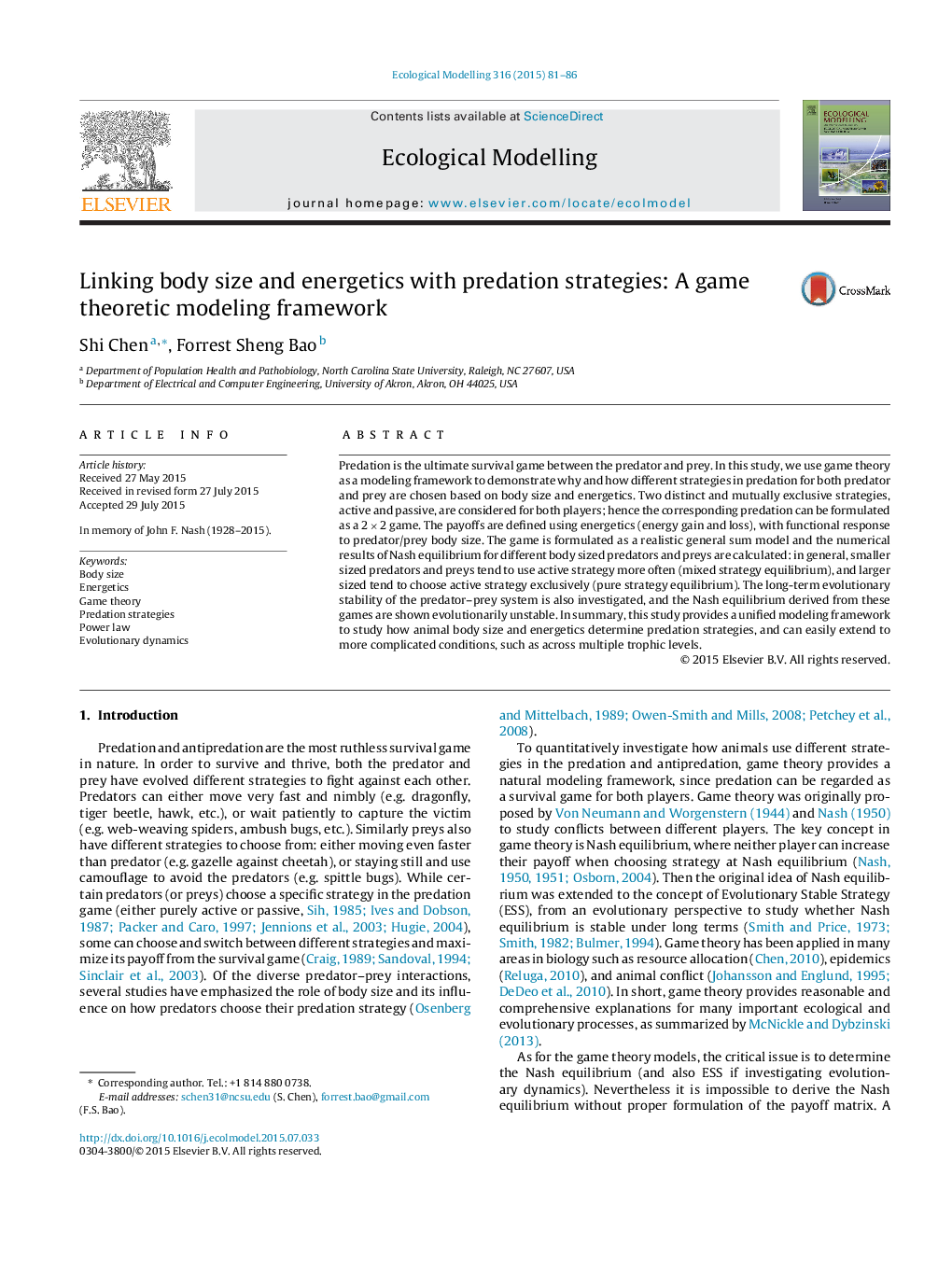| Article ID | Journal | Published Year | Pages | File Type |
|---|---|---|---|---|
| 6296456 | Ecological Modelling | 2015 | 6 Pages |
Abstract
Predation is the ultimate survival game between the predator and prey. In this study, we use game theory as a modeling framework to demonstrate why and how different strategies in predation for both predator and prey are chosen based on body size and energetics. Two distinct and mutually exclusive strategies, active and passive, are considered for both players; hence the corresponding predation can be formulated as a 2Â ÃÂ 2 game. The payoffs are defined using energetics (energy gain and loss), with functional response to predator/prey body size. The game is formulated as a realistic general sum model and the numerical results of Nash equilibrium for different body sized predators and preys are calculated: in general, smaller sized predators and preys tend to use active strategy more often (mixed strategy equilibrium), and larger sized tend to choose active strategy exclusively (pure strategy equilibrium). The long-term evolutionary stability of the predator-prey system is also investigated, and the Nash equilibrium derived from these games are shown evolutionarily unstable. In summary, this study provides a unified modeling framework to study how animal body size and energetics determine predation strategies, and can easily extend to more complicated conditions, such as across multiple trophic levels.
Related Topics
Life Sciences
Agricultural and Biological Sciences
Ecology, Evolution, Behavior and Systematics
Authors
Shi Chen, Forrest Sheng Bao,
